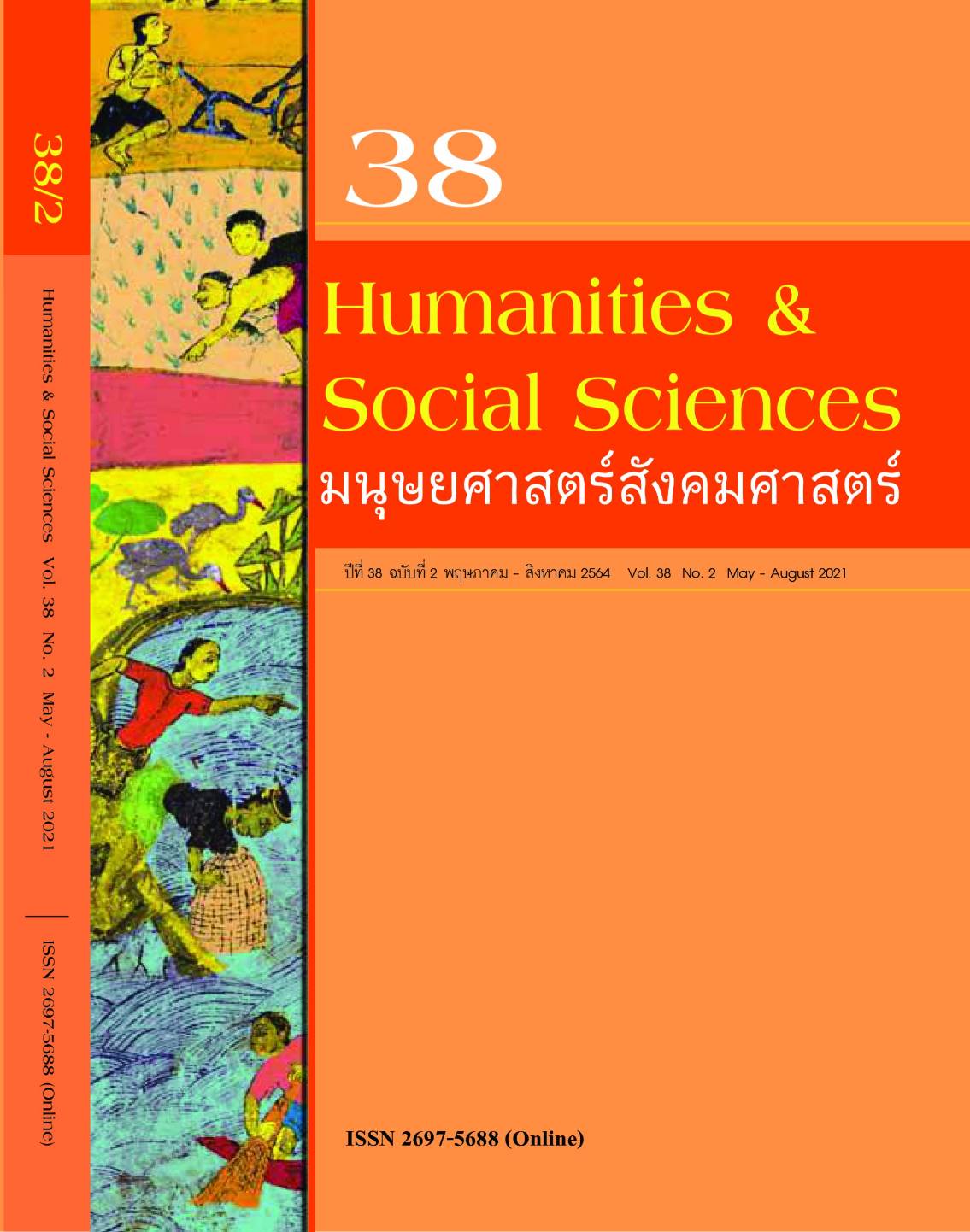เควียร์ในนิทานสุนทรภู่
Queer in Sunthornphu’s Tales
Keywords:
sexualities, queer, Sunthorn Phu’s literary talesAbstract
Abstract
The objectives of this research are to explore the sexualities of queer characters in Sunthorn Phu’s literary tales and to analyze factors that affect the sexual orientation of queer characters in Sunthorn Phu’s literary tales. The researcher studied 4 literary tales written by Sunthorn Phu: Kobut, Lucksanawong, Singha Kraiphob, and Phra Abhai Mani. Research result found that sexual orientations in the literature have two types, namely homosexual such as lesbianism in Phra Abhai Mani, Lucksanawong, and Singha Kraiphob, also gay in Kobut. The nature of sexual orientations are the naturally external identity of Thipkasorn and
Suwarn Ampha in Laksanawong and the naturally internal identity in Phra Abhai Mani. Besides, the research found that there are two factors affecting both homosexual and heterosexual sexual orientation: physical factors, namely society and environment and biological factors, namely the appearance and natural needs of the character. The discovered factors led to know that the sexual orientations of queer were in the early Rattanakosin era literature; therefore, it indicated that queer has been in every age of Thai society.
Keywords: sexualities, Queer, Sunthorn Phu’s literary tales
References
2. ชลิดาภรณ์ ส่งสัมพันธ์. (2544). ภาษาเพศ: อำนาจ เรื่องทางเพศ กับพหุทางจริยศาสตร์. เชียงใหม่: ศูนย์สตรีศึกษามหาวิทยาลัยเชียงใหม่.
3. ปรียารัตน์ เชาวลิตประพันธ์. (2549). การสมพาสที่ผิดธรรมชาติในนิทานไทย : การศึกษาอนุภาคทางคติชนวิทยา. กรุงเทพฯ: โครงการเผยแพร่ผลงานวิชาการ คณะอักษรศาสตร์ จุฬาลงกรณ์มหาวิทยาลัย.
4. ปิยะทัศนีย์ เกิดโมฬี. (2550). กลวิธีการใช้วาทศิลป์ในนิทานคำกลอนของสุนทรภู่. วิทยานิพนธ์ศิลปศาสตร์มหาบัณฑิต สาขาภาษาไทย มหาวิทยาลัยศรีนครินทรวิโรฒ.
5. ภาวิน มาลัยวงษ์. (2554). รู้จักเควียร์ผ่านนักรบกลายพันธุ์เอ็กซ์เมน(ฉบับออนไลน์). วารสารมนุษยศาสตร์ คณะมนุษยศาสตร์ มหาวิทยาลัยเกษตรศาสตร์, 18(1), 1-14.
6. มัทนา เจริญวงศ์. (2549). การประกอบสร้างความหมายเกี่ยวกับอัตลักษณ์ทางเพศของตัวละครเควียร์ในภาพยนตร์ : กรณีศึกษาเรื่อง Hedwig and the Angry Inch. มหาวิทยาลัยมหาสารคาม : คณะวิทยาการสารสนเทศ.
7. สุรเชษฐ์ สุขลาภกิจ. (2561). ผัวเดียว เมียเดียว อาณานิคมครอบครัวในสยาม. กรุงเทพฯ: มติชน.
8. สุระ อินตามูล. (2559). การแสดงและนักแสดงเควียร์: การสร้างอัตลักษณ์เควียร์ของสังคมไทยผ่านละครนอก. วารสารวิจิตรศิลป์ มหาวิทยาลัยเชียงใหม่, 7(1). 1-64.
9. สุนทรภู่. (2517). พระอภัยมณี(พิมพ์ครั้งที่ 14). กรุงเทพฯ : บรรณาคาร.
10. สุนทรภู่. (2501). นิทานคำกลอนสุนทรภู่ : สิงหไกรภพ ลักษณะวงศ์ โคบุตร รวบรวมโดย พ. ณ ประมวลมารค. กรุงเทพฯ : แพร่พิทยา.
11. อรทัย เพียยุระ. (2561). วรรณกรรมกับเพศภาวะ (พิมพ์ครั้งที่ 2) . ขอนแก่น: ขอนแก่นการพิมพ์.
12. Annamarie Jagose. (1996). Queer theory: an introduction. New York: NEW YORK University Press.
13. Santilanes, Alexander. (2006). "Queering Ethnography". Postamble,2(2): Pp.ix-xiv.



